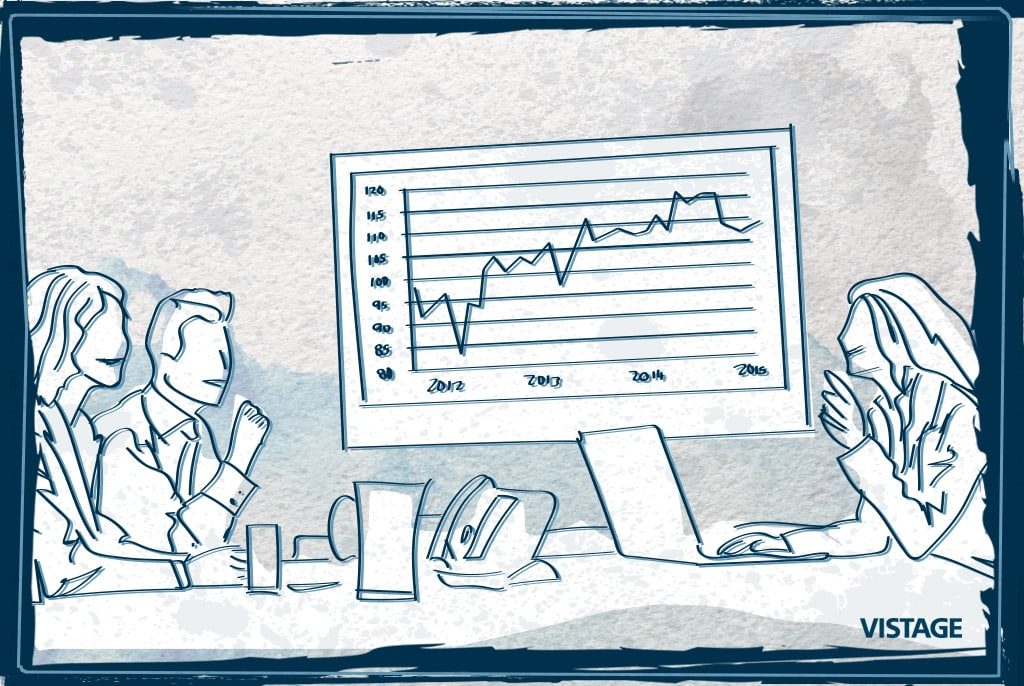How to Transition from Traditional Sales to Digital Marketing

Marketing and selling are changing radically in all industries. It’s 2014 and most business leaders have accepted that focus on social media, web and search visibility and even impressions on major sites like Facebook or key industry portals are essential to success. If you’re still not buying it, take a look at some hard data shared by Vistage member and CMO Richard Browne.
If you’re still reading, we’ll assume you’re at least beginning to believe the marketing and selling landscape is changing. And for most of us, it’s not that we haven’t accepted the reality of marketing and selling in 2014, it’s that we’re still struggling to make sense of it all.
Most importantly, most businesses, especially businesses that have had years of success and growth, continue to struggle to turn the ideas and investments into real return on investment.
Let’s agree to some basics:
Search Marketing is a Must
The vast majority of purchases today start with a search. Your company has to appear in the results of the most relevant searches, though paid ads or organic search optimization.
Social – New Toy for Marketing Folks or Crucial Medium?
Depending on the industries and customers you target, some segment of your market may use social media tools like Twitter, Facebook, LinkedIn, YouTube and other systems as a primary means of research and communication.
Every business has to identify the right social systems to focus on, maintain a presence and monitor discussions relevant to its brand. Not to mention that Facebook and other sites are introducing powerful new advertising capabilities that offer new opportunities.
Your Website is Your Store Front
The first thing many customers see will be your website. In days gone by, it might be your trade show booth, your ad in the trade magazine or your sales rep. Now, more often than not, it’s your site. Making the right impression and providing a compelling experience for your audience is crucial.
However, just as important is managing the “flow” of visitors to your site. Once they arrive and learn about your company, what happens next? If you’re not in control of that process, then they’re probably finding their way to your competitors’ sites more often than their calling your 800 number.
Surveys show that CEOs know this. But, they don’t feel confident they’re leveraging these new opportunities and tools effectively. Achieving a profitable ROI is elusive in Digital Marketing. Frequently businesses pour big budgets and lots of man hours into digital marketing efforts that feel more like an experiment than a strategy and can’t be directly tied to sales results.
The Catch 22
For years strategists have lamented the chasm between marketing and sales. Marketing folks think their job is brand building and sales people think marketing is there for the sole purpose of generating leads. In the brave new world of digital marketing, brilliant performance by the digital marketing team can be undercut by a lack of sales follow through.
However, it can be counterproductive to retool the sales process and retrain sales people if the digital marketing results don’t materialize. Frequently, businesses adopt a wait and see approach that leads to failure for both marketing and sales efforts.
The Perfect Storm
 Imagine a business that has been built over 10 or more years with investments in trade show marketing and traditional sales prospecting techniques like networking, referrals and cold calling.
Imagine a business that has been built over 10 or more years with investments in trade show marketing and traditional sales prospecting techniques like networking, referrals and cold calling.
As leadership decides that the website needs to be updated and investments made in search marketing and social media, the money has to come from somewhere. So, a couple of the lesser trade shows that would normally be on the schedule are removed from the budget.
As with any new adventure, things won’t go perfectly with the initial investments in digital marketing. The time and cost required to update the website may be greater than expected, pay per click campaigns may take months, thousands of dollars and elusive expertise to yield significant volumes of qualified leads and SEO and Social efforts are notoriously long term investments that evade clear measurement of ROI.
Sales people become frustrated and impatient with leads from web endeavors. Due to the need to experiment and “tune” the campaigns, initial sales leads may be too few or just not the right fit. Sales people go back to doing what they’ve always done to hit their quotas but, cuts in the traditional marketing budget hinder those efforts.
And just when searches of the most valuable keywords begin to direct significant traffic to the new improved website, there is little to no sales response due to lack of enthusiasm or lack of understanding of the context or quality of the lead. Sales people may not even receive these leads for days. Leads may not even end up on a lead nurturing email marketing campaign.
So, sales suffer just as digital marketing investments are being increased and digital marketing success fails to yield sales success. Profits are hit, sales people are frustrated and looking for the exits and marketing and sales executives are pointing fingers.
This scenario is not uncommon. In fact, it may be the likeliest outcome if your embrace of digital marketing is not intimately coordinated with measured changes to the sales approach.
It’s been done before. Auto dealerships and home builders are both very traditional in their approach to marketing and sales and today there are many examples in both industries of highly successful transitions to digital marketing.
To learn how your business can make the transition smoothly and successfully, stay tuned for our upcoming articles on Executive Street:
1. 3 Musts for Sales Teams to Win with Digital Marketing
2. 3 Easy Ways to Boost ROI on Digital Marketing
Category: Business Growth & Strategy Marketing Sales
Tags:

